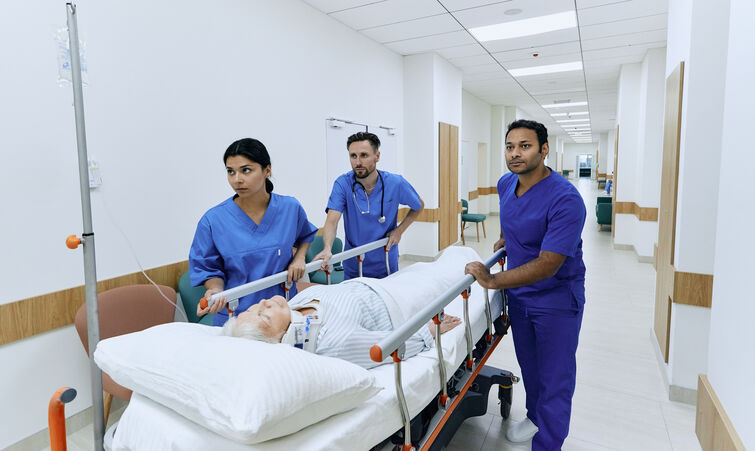What are the roles of a caretaker and wardboy in a hospital?
Caretaker and wardboy both are the silent backbone of any hospital. They may not hold medical degrees, but without them, the hospital simply cannot function smoothly. They ensure that patients are comfortable, clean, and attended to.
Roles of a caretaker
- Patient Assistance: They help patients with daily activities like bathing, dressing, eating, taking medicines, moving around or shifting from to wheelchair.
- Basic Health Monitoring: A skilled caretaker observes and reports changes in a patient’s condition to nurses or doctors.
- Emotional Support: They provide companionship to patients, especially elderly or long-term patients and comfort them during stressful or painful procedures.

- Maintaining Hygiene: They keep patients and their rooms clean and sanitized.
- Coordinating with Medical Staff: They follow instruction from doctors and nurses and transport patients for tests or scans within the hospital.
Roles of a wardboy
- Patient Transportation: They shift patients from ward to operation theatre, diagnostic labs or other departments.
- Support During Medical Procedures: A wardboy assists nurses and doctors in minor procedures by holding or positioning patients when needed.
- Maintaining Cleanliness: They clean and sanitize patient rooms, beds and common area, as well as dispose of medical waste properly as peer hospital protocols.

- Messenger Duties: They carry files, reports or samples between departments as needed.
- Emergency Response: During urgent situations, they act quickly by helping move the patients or equipment and also provide physical assistance.
Difference between a caretaker and a wardboy
Although some roles and responsibilities of nursing staff like caretaker and wardboy overlap, there are some points of difference between them:
- Primarily, caretakers are responsible for personal care and emotional support or patients, while wardboys are responsible for assisting physically and logistically within the hospital.
- In terms of medical involvement, caretakers may assist in observing the condition of a patient and reminding meds, whereas wardboys help in procedures by setting of beds, holding patients or handling equipment.
- Caretakers are often assigned to specific patients whereas wardboys work across wards and hospital departments.
Hospital staff members like caretaker and wardboy are indispensable pillars of a hospital, offering crucial support to everyone involved. For patients, they provide comfort, dignity, and hands-on help during their most vulnerable moments. For families, they offer reassurance that their loved ones are in caring and attentive hands. For nurses and doctors, they lighten the workload by handling non-medical tasks efficiently, allowing the medical team to focus on treatment and diagnosis. Their presence ensures that hospitals run smoothly, compassionately, and effectively—making them a vital part of the healing process.
If you are looking for a job in this noble profession, you can try MyJobee app where you can easily apply for jobs in your city.





